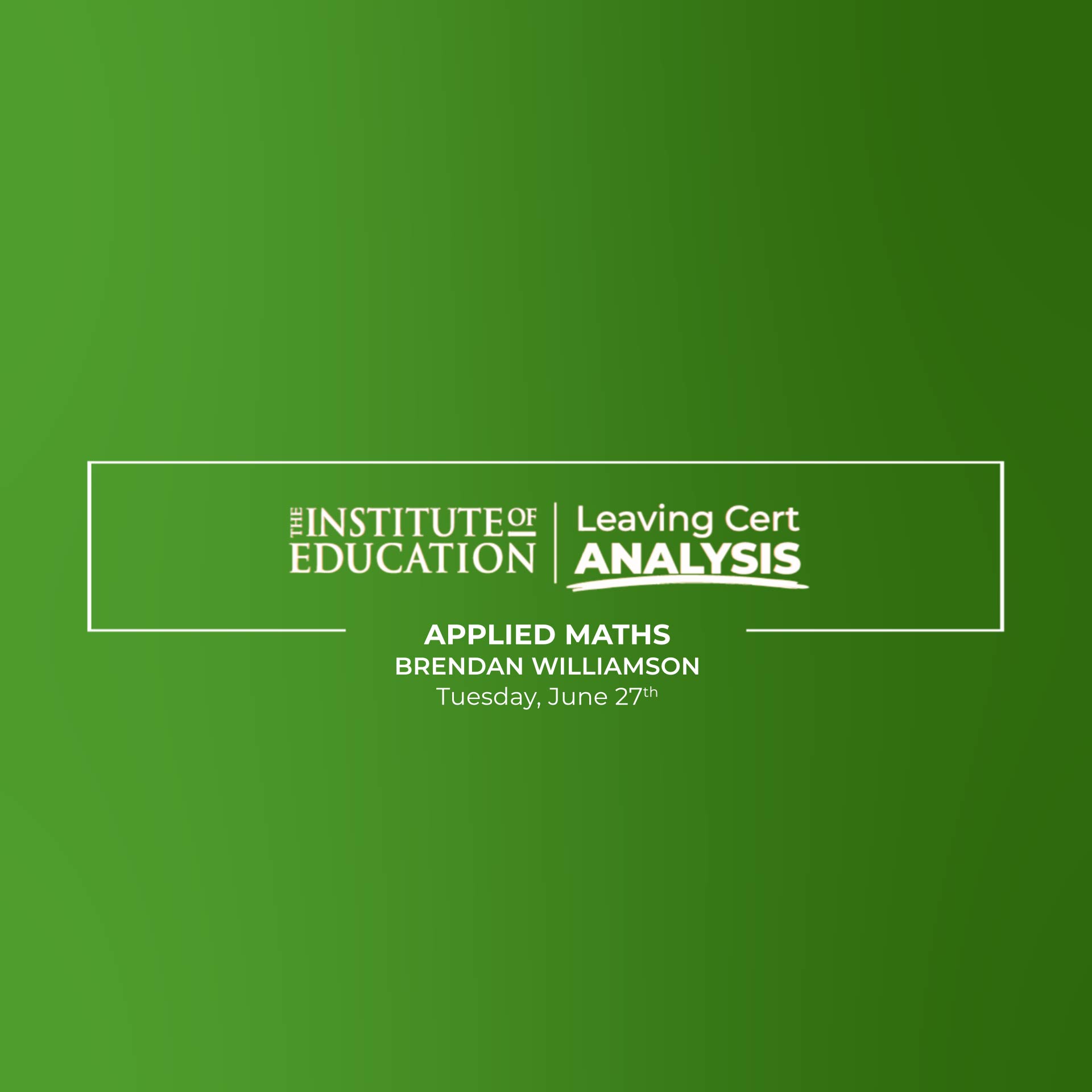Reaction to Leaving Certificate 2023 Applied Maths (Higher Level) by Brendan Williamson, Applied Maths teacher at The Institute of Education.
- A new syllabus combining elements of the old and new course in a way that required students to know the full breadth of the course.
- Some questions were very similar to the sample paper, while others offered new and unexpected twists.
This was the first year of the new Applied Maths syllabus which not only changed the topics covered but the way students approached revision and the composition of questions. Students could no longer focus on only a handful of topics at the expense of the rest, assured that that would be sufficient. The modern paper mixes topics together in way that requires a strong grasp of all elements.
Question 1 offered a nice introduction to the paper. It bore a similarity to the sample paper and the instructions were generous in their clarity – being told to use integration by parts is a useful piece of guidance. Question 2 started with Dijkstra’s algorithm, which is a rather standard and expected element of the course. The underlying mechanics of the question was clear and familiar, but students would likely have preferred fewer points and smaller numbers for ease. As it stands, the questions were manageable but time-consuming, a trait that would be found elsewhere on the paper. Part (b) on collisions was reminiscent of questions from the old syllabus but trimmed to accommodate the modern timing of the exam.
Question 3 was a tough question and will likely be skipped by most students. It drew on a topic from the old syllabus (circular motion) but the particulars of the question were novel and complicated the matter, such that a generally unpopular topic became even more unpalatable. Question 4 looked like it might follow suit, with its mention of “buoyancy” evoking the topic of hydrostatics. However, this was a vocabulary issue rather than a mathematical one, so anyone breaking down the question’s information would be able to parse out the core concepts. While Question 3’s circular motion was off putting, the linear motion of Question 4(b) was particularly manageable but arithmetic heavy, again requiring students to mechanistically work through the task.
The final half of the paper was a fine balance of familiarity and challenge. Questions 6 and 9 were very similar to the sample papers, so students who had worked on them will likely be relieved. The former question asked about second order inhomogeneous difference equations, which might cause some moments of pause but, as with every challenge on this paper, when considered as part of an ensemble shouldn’t cause much trouble.
Pleasingly, Question 7 offered students the choice between Prim or Kruskal’s algorithm. The later stages of the question offered a curveball that might have spooked some, as it required a more common sense approach than strictly methodological approach. Students wondering where dot products would make their debut found them in Question 8 on projectiles (not the anticipated collisions). What was expected was the first order difference equation of Question 10. The latter part of this question saw a return to circular motion and, while the algebra may have spooked students, the mechanics of this question were similar to those in previous years, unlike its counterpart in Question 3.
Overall, this was a fair but challenging paper that fused material into a new way of examining Applied Maths. Students would have found some questions much more time-consuming than others and the consideration of which questions to answer was much more involved than previous years. There were lots of opportunities for students to earn marks, in particular for those aiming for the H3/4 will find lots on the table. The top scorers will be those who could draw on the full range of the course.

